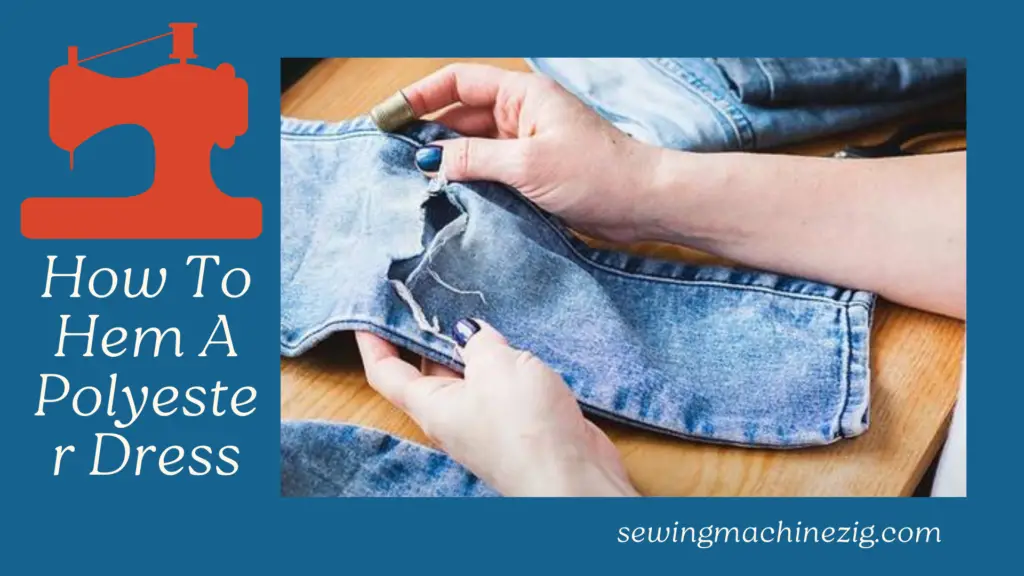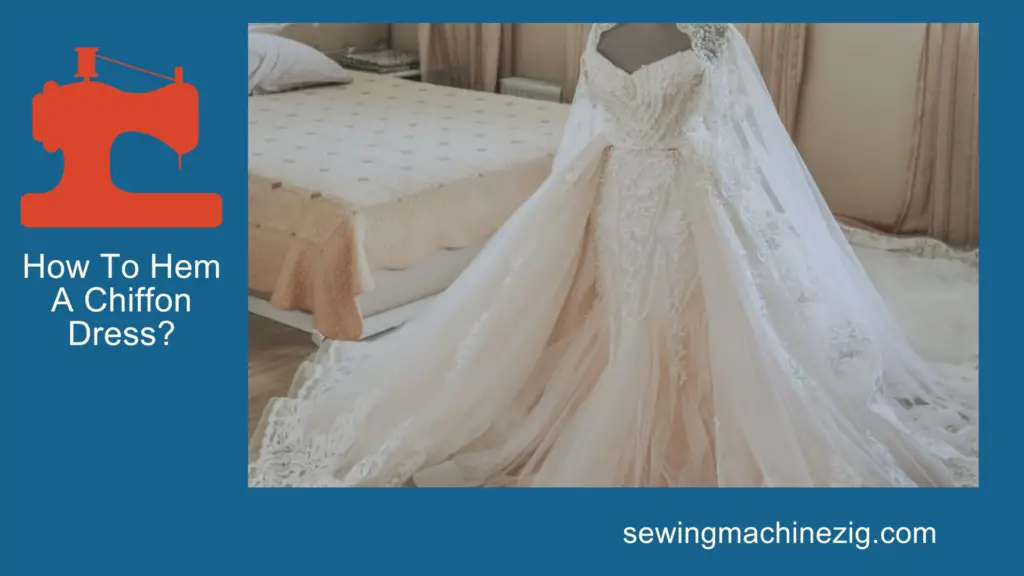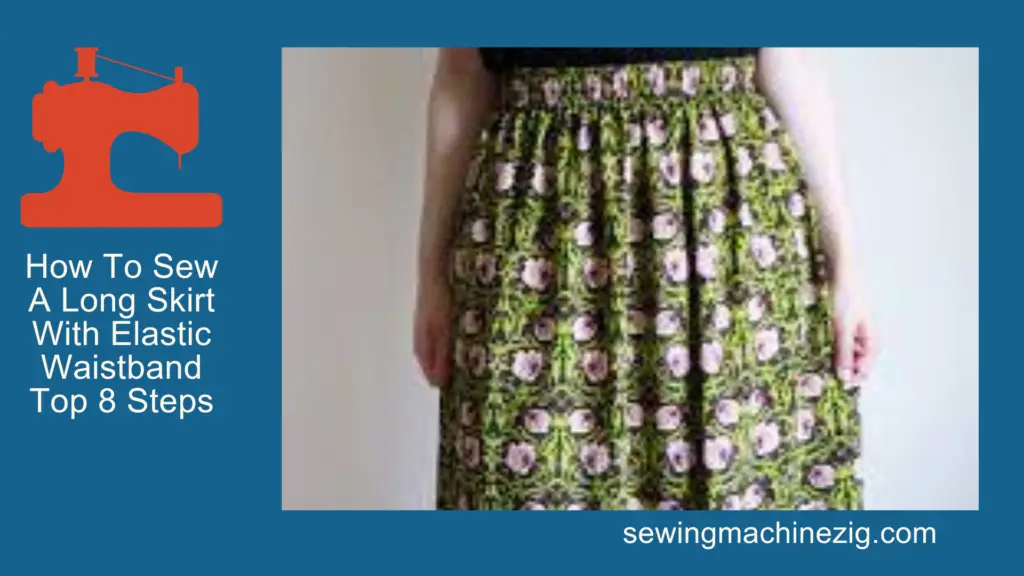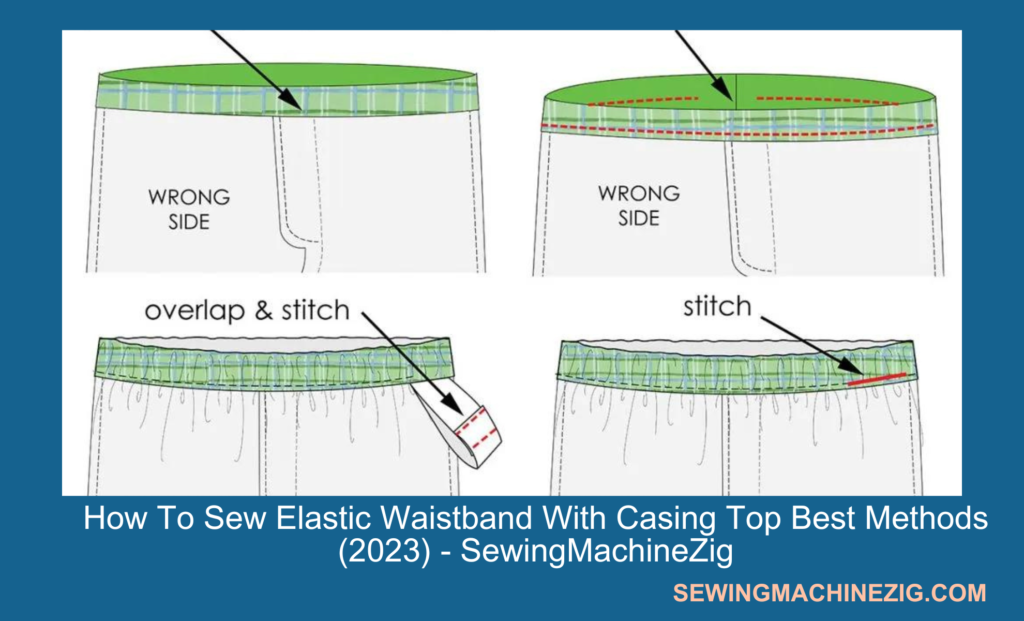
Sewing is a creative and practical skill that has been passed down through generations. One of the essential techniques in sewing is creating a waistband, and there are different ways to do it, including a waistband with an elastic casing. This type of waistband is versatile and comfortable, making it an ideal option for many different types of clothing, from skirts to shorts to pants.
If you’re looking for how to sew elastic waistband with casing, you’re in the right place. In this guide, we’ll take you through all the steps to create a comfortable and functional waistband that will stay in place without digging into your skin. You don’t need to be an experienced seamstress to create an elastic waistband with casing; with a few basic tools and some fabric, you’ll be able to complete this project in no time.
Before we get started, it’s important to understand how to sew elastic waistband with casing. The elastic is sewn inside a tube of fabric, known as the casing, which is attached to the garment’s waist. This technique allows for a comfortable fit, and the elastic will keep the garment in place without being too tight or restrictive.
Now that you understand how to sew elastic waistband with casing, let’s get started. In the following ten steps, we’ll guide you through the process of creating an elastic waistband with the casing, from measuring and cutting your fabric to finishing the waistband. With some practice and patience, you’ll be able to master this technique and create comfortable and stylish waistbands for all your clothing projects. In this article, we will discuss step-by-step How to sew elastic waistband with casing,, and its detailed guide.
Things You Need On How To Sew Elastic WaistBand With Casing:
Materials:
- Fabric
- Elastic
- Sewing machine
- Thread
- Scissors
- Measuring tape
- Iron
- Pins
Step-by-step guide:
Step 1:Measure and cut your fabric for the waistband

The first step in sewing an elastic waistband with the casing is to measure your waist using a measuring tape. Add 1 inch to the measurement to account for the seam allowance. Cut a strip of fabric that is the length of your waist measurement plus the seam allowance, and the desired width of your waistband plus 1 inch for seam allowance.
For example, if the elastic measures are 31 inches long, you will need a piece of fabric that is at least 62 inches wide (2 times the length of the elastic) and long enough to fit around the waist of the garment with some extra length to create the casing.
Step 2: Fold and sew the waistband
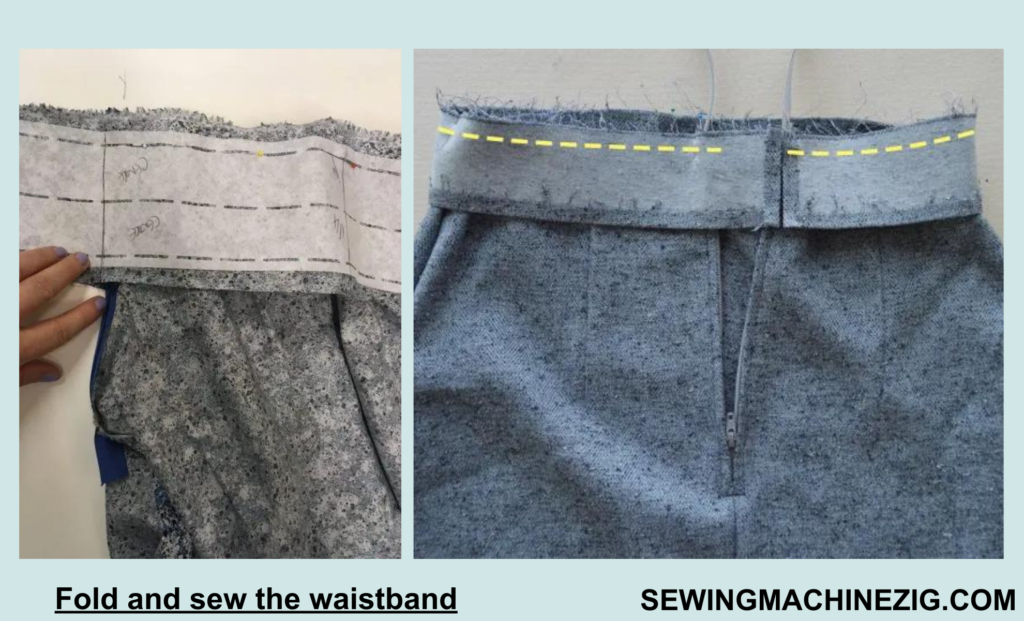
Next, fold the waistband in half lengthwise with the right sides facing each other. Pin the two edges together and sew them with a 1/2-inch seam allowance. Be sure to backstitch at the beginning and end of the seam to secure it.
Step 3: Press the seam
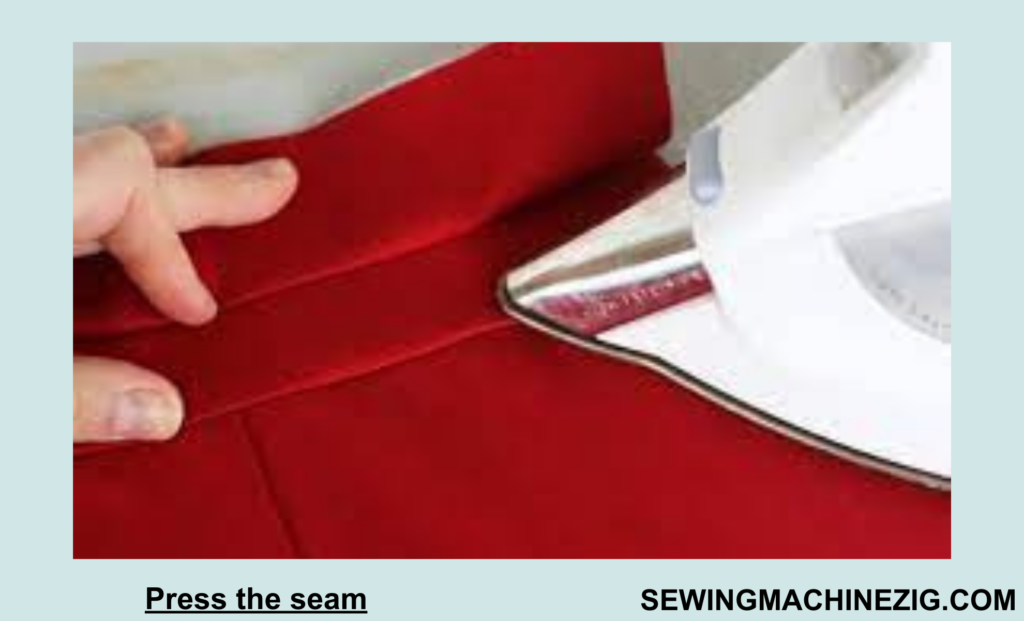
Press the seam open with an iron. This will help the fabric lay flat and make it easier to work with.
Step 4: Create the casing
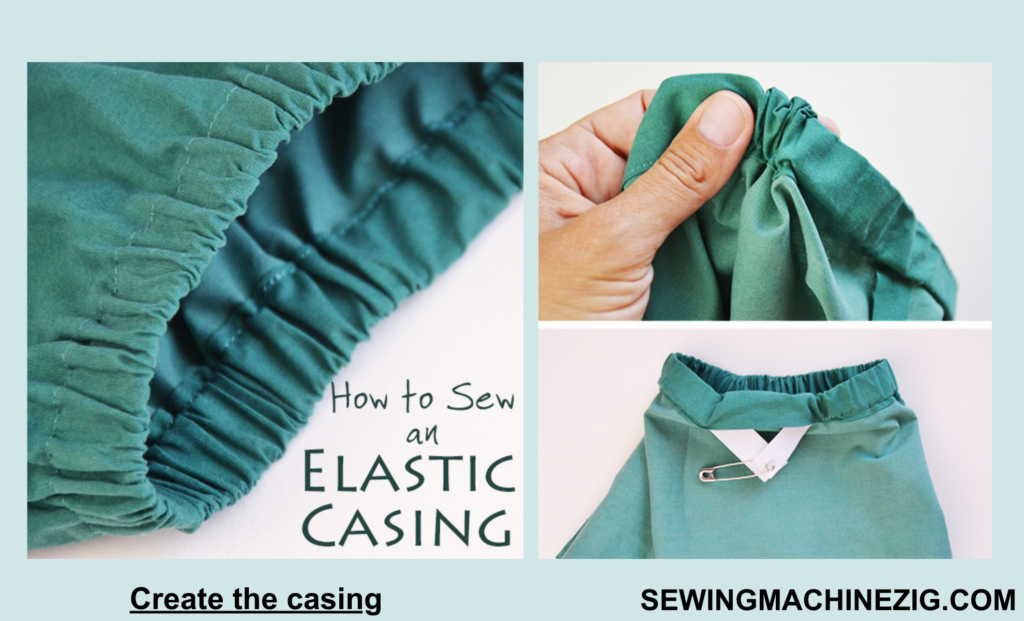
Now, fold the waistband in half again, this time widthwise. The raw edges should be tucked inside the waistband. Sew along the edge, leaving a small opening to insert the elastic. Sew the opening closed later in the process.
Step 5: Measure and cut the elastic
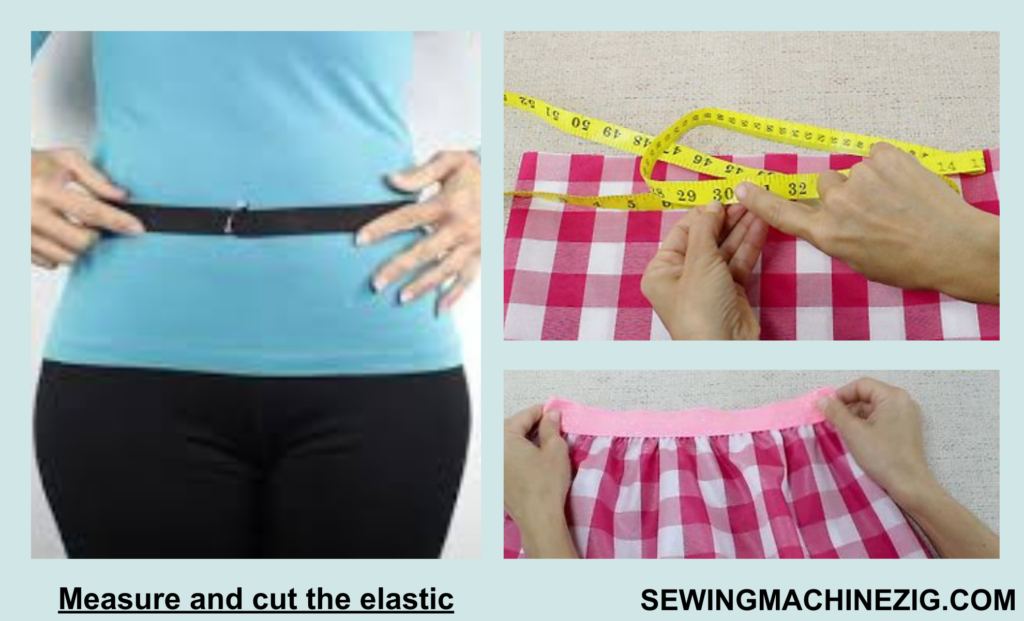
Measure the elastic according to your waist measurement, minus 1 inch. This will ensure that the elastic is snug enough to hold the garment up but not so tight that it’s uncomfortable. Cut the elastic to this length and set it aside.
For example, if the waist measurement is 31 inches, minus one inch, which gives you a total of 30 inches. This means you will cut a length of elastic that measures 31 inches long.
Step 6: Insert the elastic into the waistband
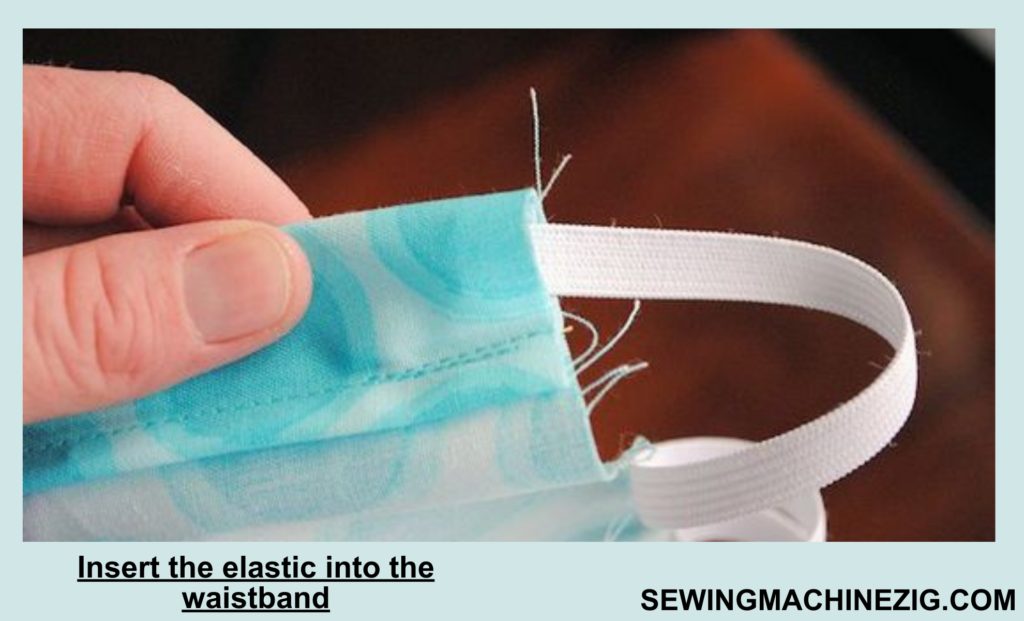
Attach a safety pin to one end of the elastic and insert it through the opening in the casing. Push the elastic through the casing until it comes out on the other side. Be sure that the elastic is not twisted.
Step 7: Sew the elastic
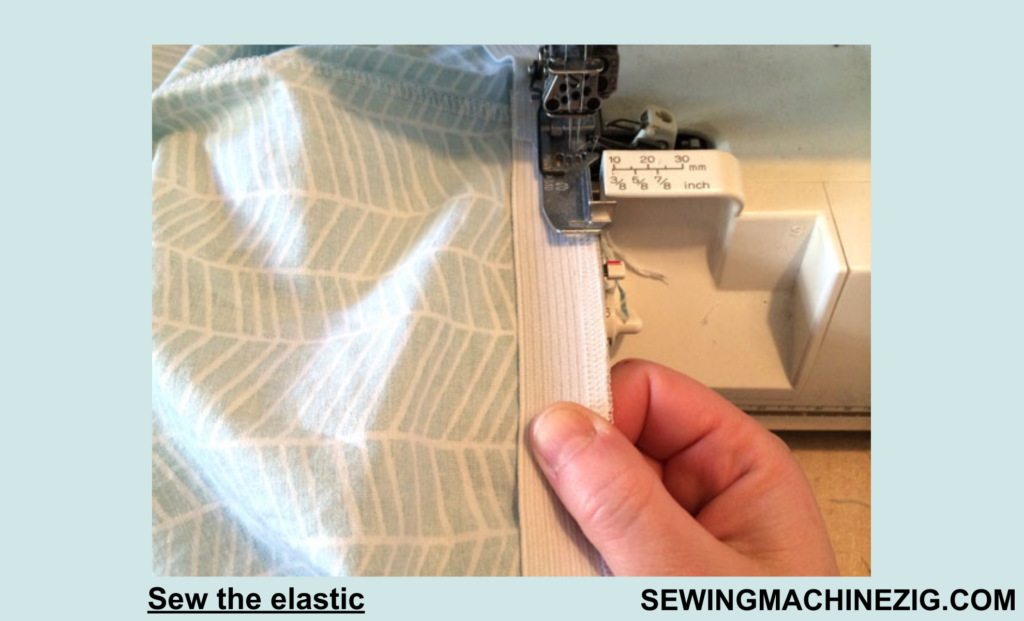
Overlap the ends of the elastic by 1 inch and sew them together. Use a zigzag stitch to ensure that the elastic stays together. Check that the elastic is not twisted before proceeding.
Step 8: Close the casing opening
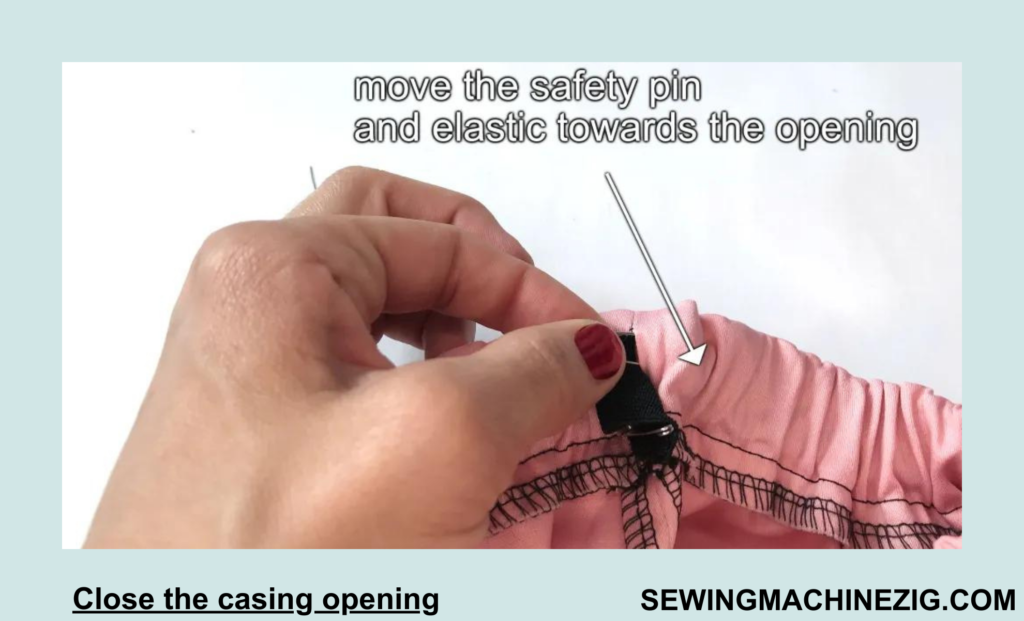
Close the opening in the casing by sewing it shut with a sewing machine or by hand. Be sure to sew as close to the edge as possible to keep the elastic secure.
Step 9: Distribute the elastic
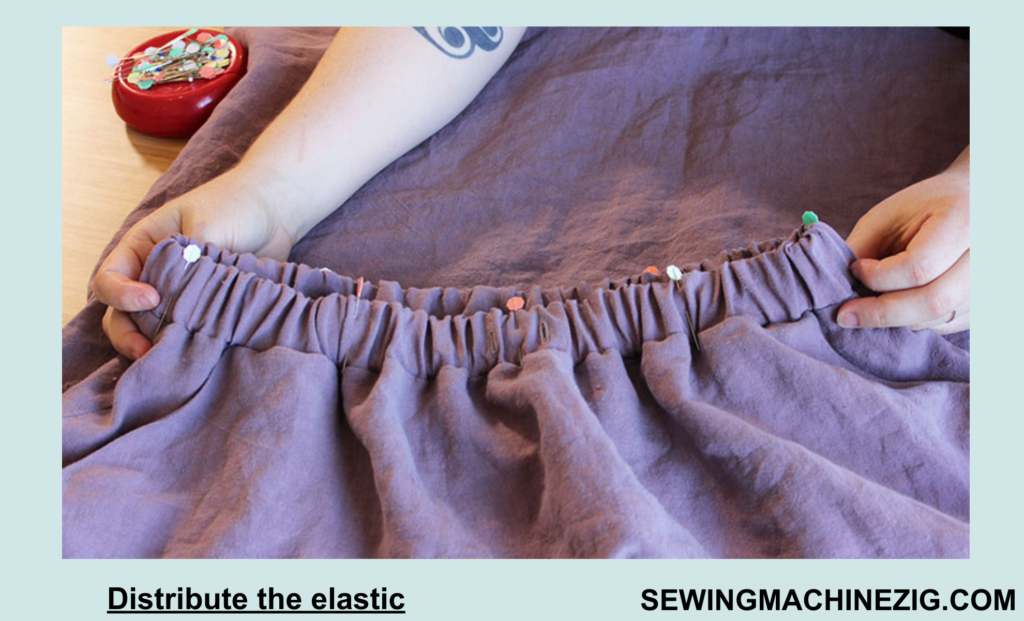
Distribute the elastic evenly within the casing by gently pulling it from either end. This will ensure that the waistband is comfortable and snug.
Step 10: Finish the waistband
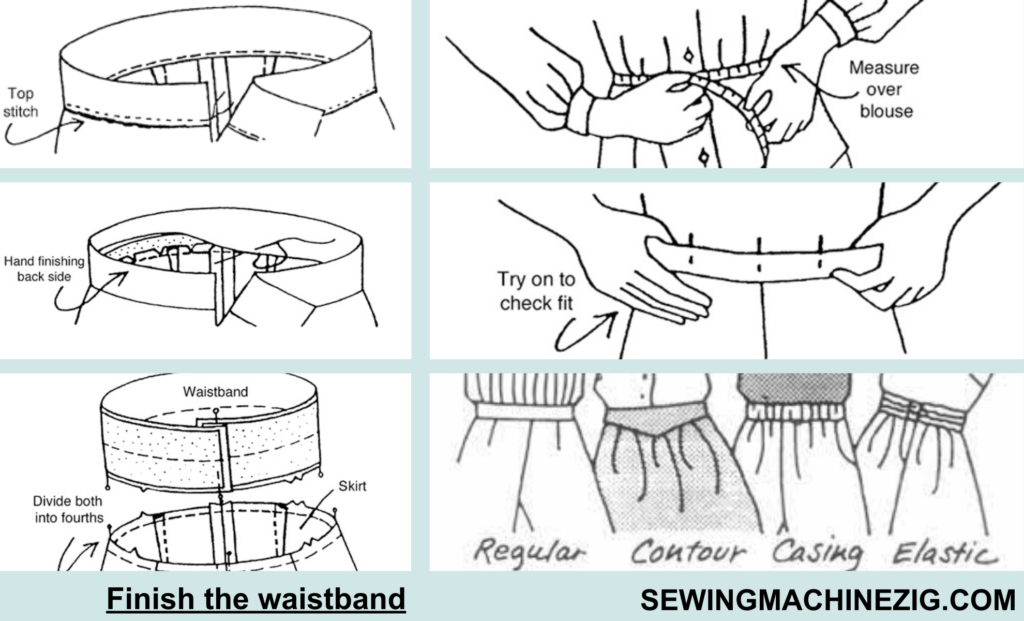
Distribute the elastic evenly within the casing by gently pulling it from either end. Fold the waistband over to hide the elastic and sew it in place. Use a straight stitch to secure the waistband in place.
Some Important Tips On How To Sew Elastic Waistband With Casing
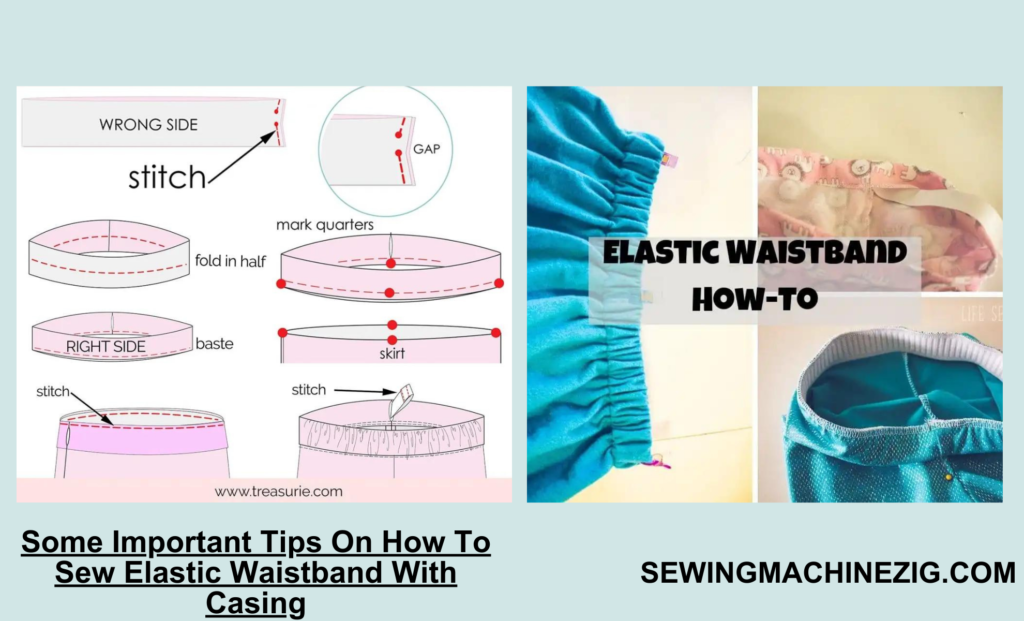
When it comes to sewing an elastic waistband with the casing, there are a few tips and tricks that can help you achieve the best results. Here are some helpful tips to keep in mind:
Choose the right fabric that uses in:
When selecting fabric for your garment, make sure it’s suitable for an elastic waistband. Lightweight and medium-weight fabrics work best, and avoid thick or heavy fabrics that may not gather well.
Measure your waist accurately:
It’s essential to measure your waist accurately to ensure your waistband fits well. Use a measuring tape to measure your waistline and add 1-2 inches for the elastic length.
Cut your fabric accurately:
Cut your fabric to the correct size and shape, following your garment pattern or measurements accurately. A well-cut fabric will make the sewing process smoother.
Press your seams:
Press your seams with an iron as you sew to ensure a neat and professional finish.
Use the right needle and thread:
Choose a needle that is suitable for the fabric you’re using, and use a thread that matches your fabric.
Secure you’re elastic:
When attaching your elastic to the casing, make sure to sew the ends together securely to prevent them from slipping out.
Sew slowly and carefully:
Take your time as you sew and follow the instructions carefully to ensure you get the best results.
Test your elastic length:
Before sewing your waistband, test your elastic length by fitting it around your waist. Adjust the length if necessary to ensure a comfortable fit.
By keeping these tips in mind, you’ll be able to sew an elastic waistband with a casing that fits well, looks professional, and feels comfortable to wear. Happy sewing!
Conclusion:
How to sew elastic waistband with casing, sewing an elastic waistband with the casing is a simple yet essential technique that every sewist should know. It’s a versatile method that works well for different types of garments, from skirts to shorts to pants. By following the steps outlined in this guide and keeping the tips in mind, you’ll be able to sew a comfortable and functional waistband that looks great and fits well. I hope now you are fully aware of How to sew elastic waistband with casing,
FAQs:
How To Sew Elastic Waistband With Casing
Q. What is a waistband casing?
A. A waistband casing is a tunnel-like structure that holds elastic in place, allowing it to stretch and fit snugly around the waist.
Q. What is the best fabric to use for an elastic waistband with casing?
A. Light to medium-weight cotton, linen, rayon, or jersey knit fabrics are great choices for an elastic waistband with casing.
Q. What width should I cut my waistband casing?
A. The width of the waistband casing depends on the width of your elastic. As a general rule, add 1 inch to the width of your elastic to determine the width of your casing.
Q. Can I use a different color thread for my waistband casing?
A. Yes, you can use a different color thread for your waistband casing to add contrast or interest. Choose a color that complements or contrasts with your fabric.
Q. How do I sew the ends of my elastic together?
A. Overlap the ends of your elastic by 1 inch and sew them together with a zigzag stitch or a straight stitch.
Q. How do I prevent my elastic from twisting inside the casing?
A. Pin or clip your elastic to the fabric at both ends before feeding it through the casing to prevent twisting.
Q. How can I ensure that my elastic waistband sits evenly?
A. Make sure that your elastic is evenly distributed around the waistband before sewing the ends together. You can mark the elastic at even intervals to help with this.
Q. Can I add pockets to my garment with an elastic waistband and casing?
A. Yes, you can add pockets to your garment with an elastic waistband and casing. Just make sure to sew the pockets to the fabric before sewing the waistband casing.
Q. How can I adjust the length of my elastic waistband?
A. To adjust the length of your elastic waistband, simply cut a new piece of elastic to the desired length and sew the ends together.
Q. Can I reuse the same waistband casing for a different garment?
A. Yes, you can reuse the same waistband casing for a different garment, as long as the waist circumference is similar. Simply cut the casing to the desired length and attach it to your new garment.

